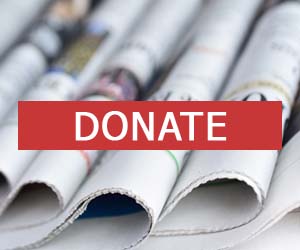Justice is often represented by a blindfolded lady holding scales—an enduring symbol of fairness and impartiality. Yet, in the real world, justice often removes her blindfold, influenced by wealth, caste, gender, and social status. For the working class and marginalized communities, true justice remains a distant dream—more theoretical than tangible. Still, amidst systemic inequities, their voices echo resilience, hope, and a demand for dignity.
Fairness vs. Equity: What Should Justice Look Like?
Fairness demands that everyone be treated by the same standards. But equity recognizes that not everyone begins life on equal footing. A fair system may give equal treatment; an equitable one adjusts to create equal opportunity. Justice, then, must be both—fair in its process and equitable in its outcomes. Without this dual approach, the marginalized remain trapped in a cycle of injustice.
Labour Movements: Pushing Back Against Exploitation
From colonial factories to modern delivery apps, laborers have long fought against exploitative systems.
The 1982 Textile Strike in Mumbai:
Over 250,000 mill workers, led by Datta Samant, stood up against poor wages and unfair labor conditions. While the strike faced heavy political and industrial pushback, it marked a historic stand for workers’ rights and sparked national debate.
Modern Gig Economy:
Today’s Swiggy, Zomato, and Uber workers face a new kind of exploitation—low pay, no insurance, and no job security. In response, they’ve begun organizing both online and offline, demanding recognition and basic rights. This shows that while the workforce has evolved, the fight for justice remains ongoing.
Justice for the Marginalized: Voices from the Ground
Access to justice is uneven. Dalits, Adivasis, migrants, and slum dwellers often face structural discrimination alongside poverty.
The Chengara Land Struggle (Kerala, 2007):
Over 7,000 landless families, largely Dalits and Adivasis, peacefully occupied unused private land. They weren’t criminals, just families demanding a home. Though the protest faced intense backlash, it forced the government to address landlessness.
Urban Evictions:
In cities like Delhi and Mumbai, slum demolitions often displace thousands without notice or rehabilitation. Yet, activists and community leaders continue to file cases, create awareness, and assert the right to housing.
When Caste Meets Gender: Double Discrimination
Women from marginalized castes face a compounded injustice.
Bhanwari Devi’s Case (1992):
A Dalit social worker raped for trying to stop a child marriage, Bhanwari Devi’s case exposed caste and gender biases in the legal system. While the accused were acquitted, her struggle led to the landmark Vishakha Guidelines against workplace sexual harassment.
These stories show that justice is not just about courtrooms—it’s about being seen, heard, and believed.
Justice from the Bottom Up: Power in People’s Hands
True justice also thrives at the grassroots level.
Mazdoor Kisan Shakti Sangathan (MKSS): This Rajasthan-based group fought for transparency and accountability, resulting in the Right to Information (RTI) Act.
Self-Employed Women’s Association (SEWA): A collective that empowers women in the informal sector with legal aid, education, and union strength.
These initiatives prove that justice is not only a verdict—it is lived, built, and demanded from the ground up.
Reimagining Justice: From Punishment to Restoration
To build a truly just society, we must:
Offer legal aid and awareness to the marginalized
Draft inclusive policies sensitive to caste, class, and gender
Encourage participatory governance
Create safe platforms for the oppressed to speak up
Justice should not merely punish wrongs but repair harm and restore dignity. It should help societies heal and grow—collectively and compassionately.
Conclusion: The Power of Resilience
The struggle for justice is long and difficult, but it is also filled with stories of strength. Despite being pushed to the margins, laborers and oppressed communities continue to rise, organize, and reclaim their space. Their courage reminds us that justice is never handed down—it is claimed, often with great personal sacrifice.
As members of a democratic society, it is not enough to study the concept of justice—we must live it, demand it, and defend it. Not only for ourselves but for those still unheard.
With inputs from the original article by Shanza Shagaf, published in Aura e-Magazine
(May 2025)




